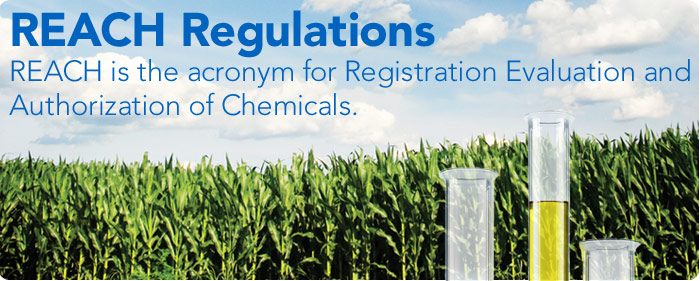European Union legislators seem to be forever coming up with increasingly complex rules and regulations, but most people agree that the Registration, Evaluation, Authorisation and Restriction of Chemicals Regulations (REACH) is the most complex, expensive and most difficult to implement of any EU legislation to date. It came into operation on 1st June 2007 and its general aim was said to be to provide protection for human health and the environment. Its very broad remit was to regulate virtually all chemicals from the point of manufacture or import into the EU area to the point of retail and beyond covering their use. To add further to the complexity, the regulations apply not only to simple chemical substances but also to preparations using chemicals and articles which may release chemicals. This, of course, means that virtually every type of business, wholesaler, retailer and end consumer is involved. REACH replaced a number of other EU Directives and Regulations but runs alongside others meaning that in many cases two or more different sets of regulatory rules may apply.
REACH requires that all substances manufactured or imported in quantities of 1 Tonne or more per annum must be registered with a central authority. A new organisation, the European Chemicals Agency (ECHA) has been set up for this purpose and is based in Helsinki, Finland. As chemicals appear in virtually all items encountered in our everyday lives, the initial registration process was designed to come into operation over a period of years. Special provisions are made for certain chemicals such as pesticides, food additives and medicines and some others are excluded from the requirements of the regulations.
In the UK, DEFRA takes overall charge of REACH and different authorities deal with different aspects of the regulations. The Health and Safety Executive (HSE) are appointed as the Competent Authority handling all matters concerning registration and enforcement is delegated to various authorities including the HSE, HSE(Northern Ireland), Scottish Environmental Protection Agency and Local Authorities.
The general idea is that full information is provided relating to each chemical substance along with assessments of toxicity and other risk factors. The required methodology for these assessments currently involves statutory animal testing and this is a controversial matter. In an article for “Nature” Constanza Rovida and Thomas Hartung (Head of the European Centre for the Validation of Alternative Methods (ECVAM) produced an estimate that the implementation of REACH would result in the “use” of 54 million vertebrate animals. This figure was disputed by the REACH authorities who claimed that only a sixth of that number would be required i.e the cruel deaths of a mere 9 million animals.
REACH has been widely criticised by countries outside of the EU including the US, India and Brazil as being excessively costly and a hamper to international trade but the EU legislators claim that among the aims of the regulations, they allow for free movement of substances (presumably within the EU) and enhance innovation and competitiveness of the EU chemical industry.
Whether REACH is of any practical benefit must, therefore, be questionable. Taking a cynical view, those in control of the major European chemical companies would now seem to effectively exclude many of their competitors’ products and so look to be in a position to monopolise the European market. Perhaps the high-sounding ideals of protecting people and the environment may simply have been a front for enabling wealthy industrialists to become even richer.
Any hopes that Britain’s exit from the EU will remove the need for REACH compliance can be discounted as the country will no doubt attempt to continue trading with our European friends and most, if not all, EU legislation will most likely be ratified into UK law. In which case navigating a route to compliance will continue to be a challenge, especially for smaller businesses. Fortunately, there are some specialist environmental consultants (e.g. TT Environmental) who can provide help and support in the compliance process.

Comments
One response to “REACH Regulations – More EU Red Tape or a Chance to Save The Planet?”
REACH is a huge burden but it does attempt to make us all safer by controlling the use of, transportation and storage of hazardous materials. However, I would like to see much more emphasis and resources targeted towards the substitution of the hazardous chemicals. At the moment this is talked about a lot but there isn’t much action.